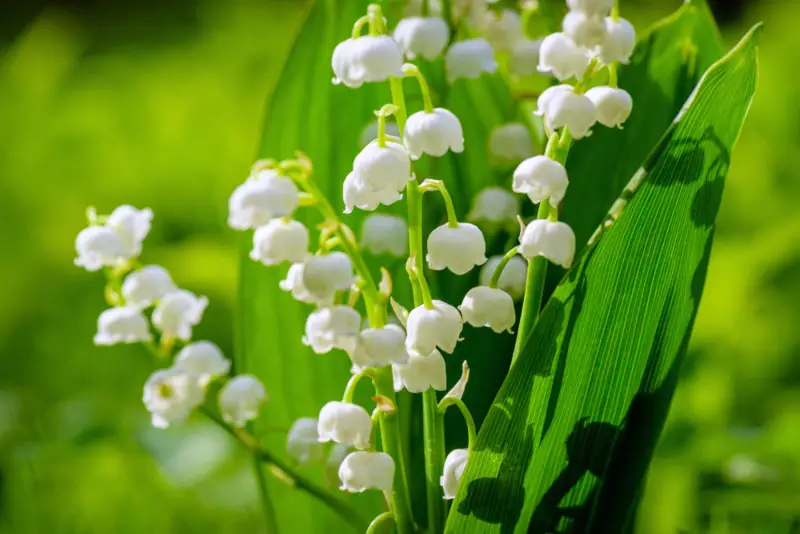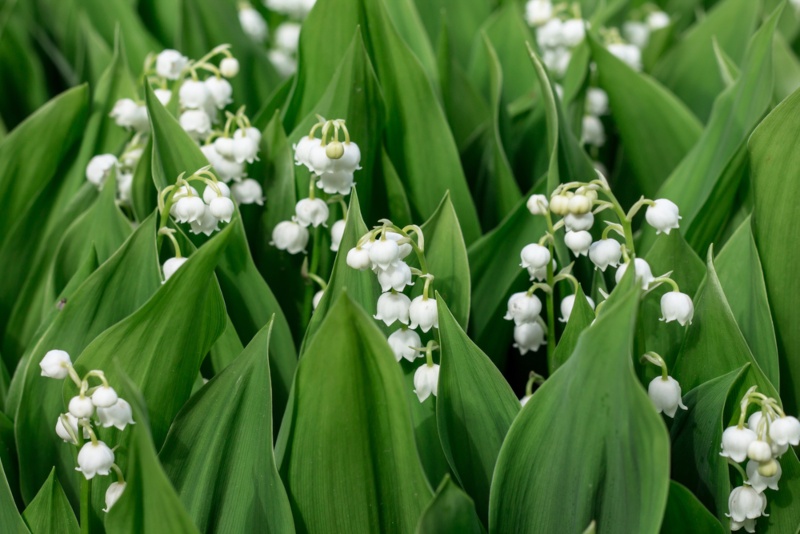
Lily of the Valley is one of the most infamous flowers in the world. Known for its appearance in myths and cautionary tales, Lily of the Valley is usually associated with themes of humility and purity.
In Germanic traditions, this highly toxic flower is seen as the virtue of the beloved Goddess of Spring, Ostara. In Christian mythology, Lily of the Valley is said to be the tears of Mary and Eve as Eve was exiled from the Garden of Eden after eating the forbidden apple.
Alternatively, during the Victorian era, Lily of the Valley represented freshness, joy, and a return to happiness after sad or melancholy times.
A quickly spreading and low-growing plant that is often known as convallaria majalis, its bell-shaped blooms are small and symmetrical, almost resembling tiny upside-down fairy hats. They are usually white but can appear pale pink, peach, or even have a blueish hue at times and are very fragrant.
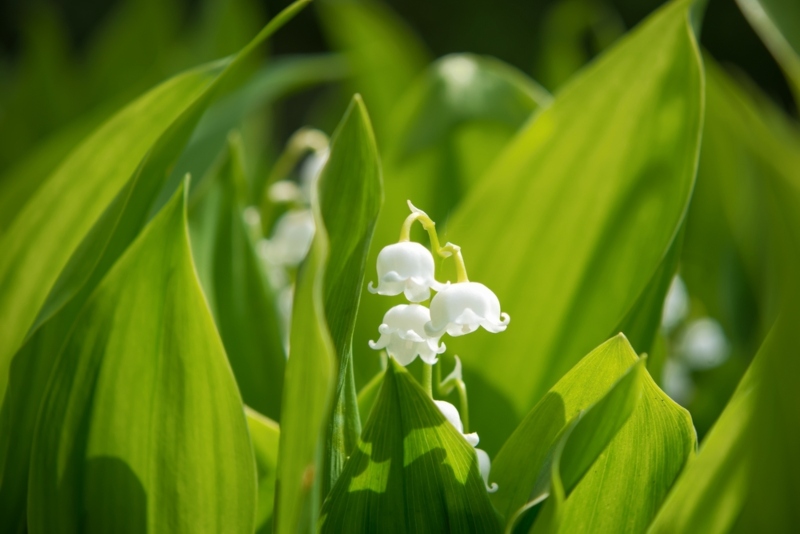
To learn more about how to grow and care for Lily of the Valley, continue reading below.
| Botanical Name: | Lily of the Valley (convallaria majalis) |
| Common Name(s): | Lily of the Valley, May Bell’s, Our Lady’s Tears, May Tears, Mary’s Tears, Bell Tears |
| Plant Type: | Rhizomatous herbaceous perennial |
| Mature Size: | 8 to 12 inches tall |
| Sun Exposure: | Anywhere from partial sun to full shade |
| Water Needs: | Needs consistent watering with mild temperature water in the morning hours |
| Soil Type: | Well-draining moist soil |
| Soil pH: | Between 5 and 7 pH; neutral soil preference |
| Bloom Time: | Early to mid Spring for 3 to 4 weeks |
| Maintenance: | Low |
| Flower Color: | White (typical), pale blue, pale pink, pale peach |
| Hardiness Zones: | 3-9 (USDA), very hardy |
| Toxicity: | All parts of the plant are very toxic to both humans, animals, and insects; do not ingest |
Lily of the Valley Care
Lily of the Valley is a fast-spreading plant that will grow ferociously without any encouragement. If left in a shady spot, it will start to sprawl and take over almost any garden. Knowing very few physical bounds, Lily of the Valley flowers have known to hop fences somehow and grow across acres of land.
With few diseases that affect it and few pests that like to eat it, this flower needs very little attention once it has been established in its soil. Since it wants to remain somewhat moist, care does involve regular watering when the top few inches of the soil become extremely dry.
Though most flowering plants do not like to be dug up, sometimes when Lily of the Valley blooms droop too far and fall off, digging up your plant and refreshing it may cause it to grow even healthier in the future.
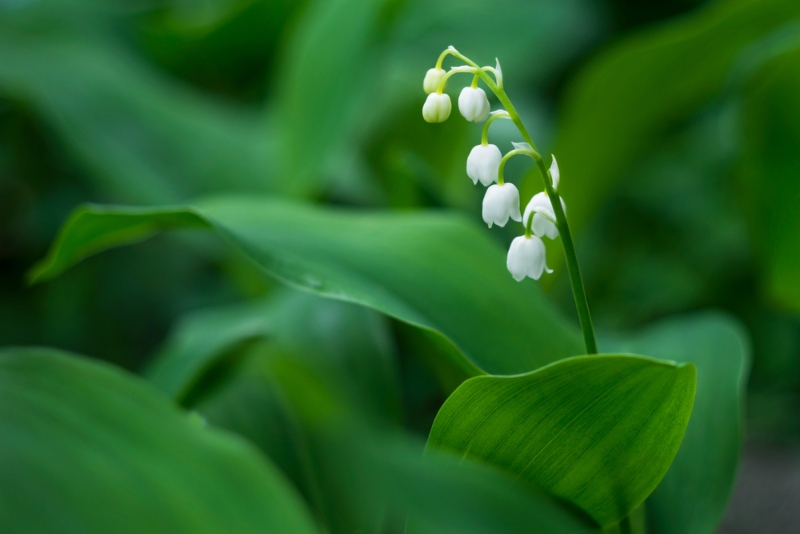
Light
Lily of the Valley is always happiest in either partial sun or full shade. Tolerating direct morning light, this plant does not do well in hot climates and therefore must be protected from the sun throughout the majority of the day.
If you live in a place that gets to about 72 degrees Fahrenheit, planting your Lily of the Valley in full shade will be your best option.
Water
When watering your Lily of the Valley, try to keep your plant wet but not waterlogged. Soggy soil will give air bubbles a greater chance of getting stuck beneath the surface, eventually choking your plant. Saturated soil also leads to root rot, which can kill the entirety of your flower.
Temperature and Humidity
The best temperature for Lily of the Valley is anywhere from 60 to 72 degrees Fahrenheit during the day and no cooler than 50 degrees Fahrenheit at night.
Mild conditions with average humidity are preferable for Lily of the Valley, though it can revive itself after withering away in warm climates. However, hot temperatures and arid weather will kill a Lily of the Valley without the possibility for revival.
Soil
Lily of the Valley thrives in humus-rich soil that is also neutral or slightly acidic. It can, however, survive in various soil conditions, including treated and composted soil. The best soil pH levels for the hardy Lily of the Valley are around 5 and 7 pH.
Fertilizer
Lily of the Valley is not a plant that requires fertilizer. If you want to fertilize your Lily of the Valley to encourage growth, the best way to do it is to add a granular Springtime fertilizer that features a slow-release ability. This fertilization is best to do when your Lily of the Valley is planted in subpar or highly basic pH soil.
Is Lily of the Valley Toxic?
Being one of the most toxic plants globally, Lily of the Valley can make people, animals, and even insects sick. Every part of the plant, including fruits, stem, roots, leaves, shoots, blooms, and flowers, contain toxins. These toxins are cardigan glycosides that cause heart problems and even death.
While Lily of the Valley cannot harm anyone just by touching it, you should never ingest it for any reason in any amount. If you or someone you know has consumed it, call 911 and poison control immediately. If your pet consumes this plant, bring them to the emergency veterinarian closest to you.
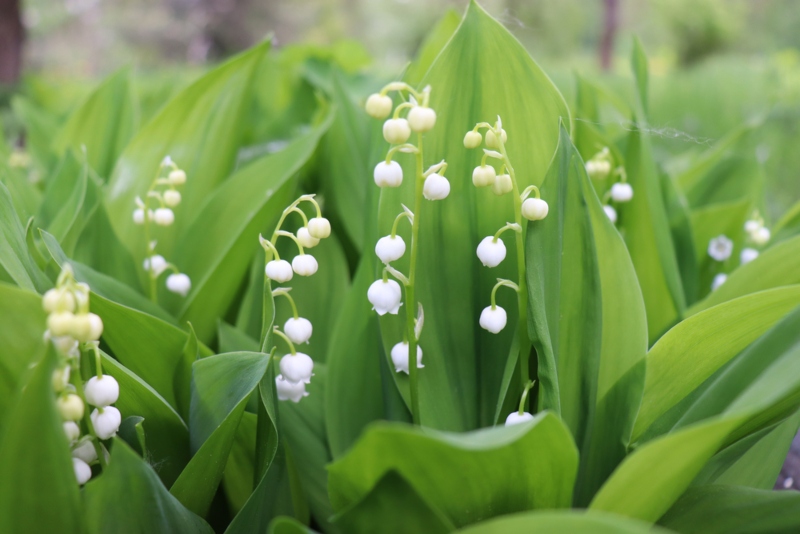
Potting and Repotting Lily of the Valley
While Lily of the Valley does not like to be potted, it can easily be transplanted within the garden if it needs to be moved to a shadier spot or out of reach of children and pets.
To keep your Lily of the Valley at its healthiest, separating it into around three sections by transplanting it with help it grow larger and thrive.
To transplant Lily of the Valley, do the following:
- Separate your plants into three main sections.
- Dig up the small pips or rhizome sections.
- Separate the pips and plant them around 4 inches apart into fresh soil in a new location.
- Water your newly planted Lily of the Valley to keep them wet.
Propagating Lily of the Valley
Propagating Lily of the Valley is not a complex or challenging process due to its desire to multiply and spread. You can propagate this plant either from its stem nodules, pips, or its rhizomes.
The best way to propagate is to either take clippings or dig up rhizomes specifically during the Fall season and plant them in a shady outdoor spot in a series of groupings or clumps right away.





